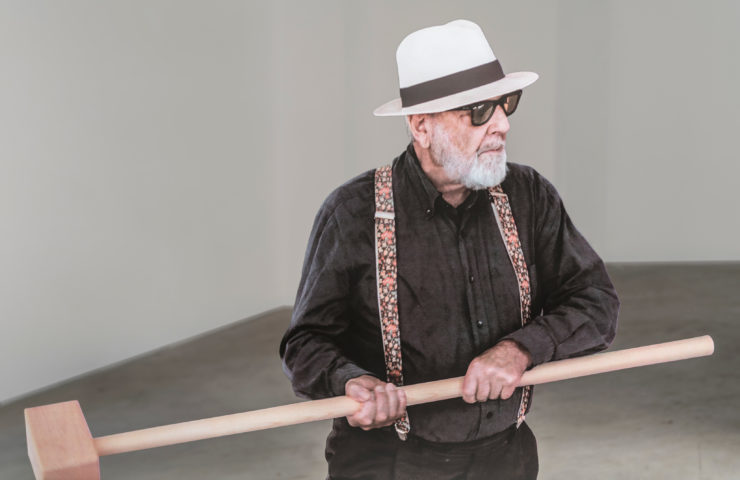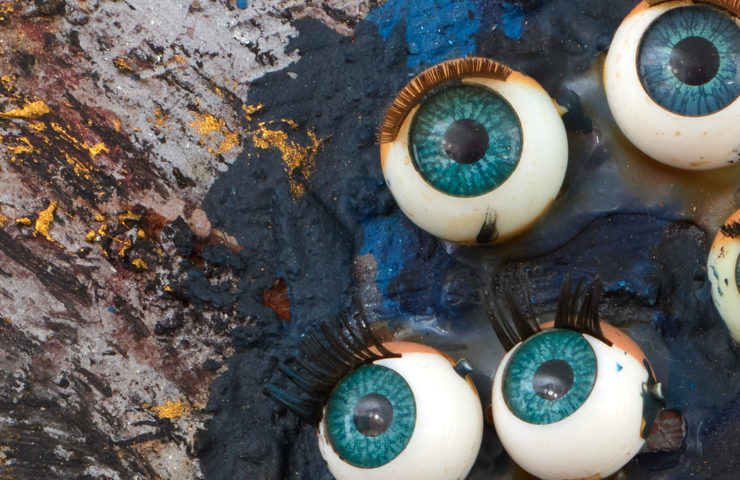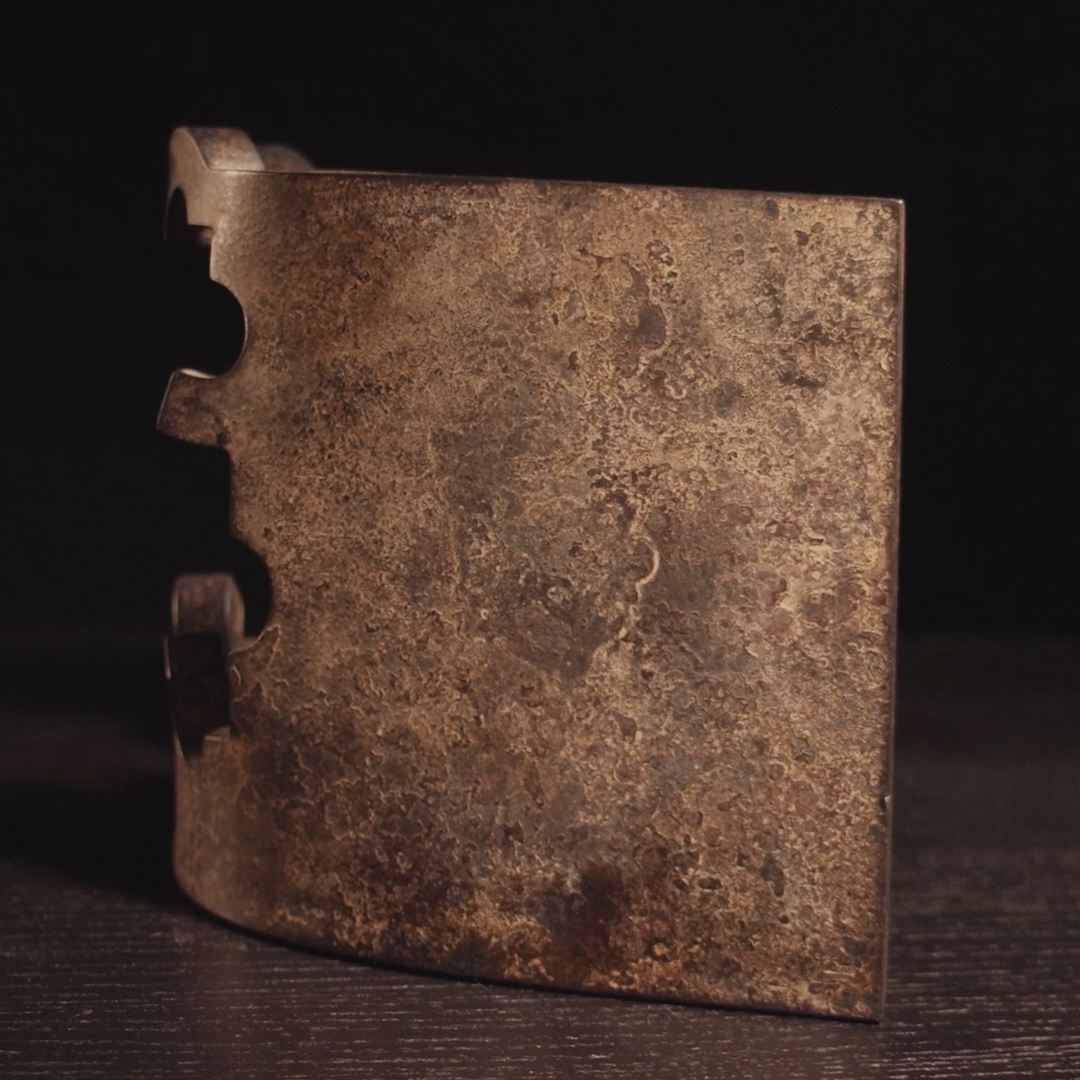Eduardo Chillida
Gure aitaren etxea, 1984
Iron
5 11/16 x 6 7/8 x 5 15/16 inches (14.5 x 17.5 x 15 cm)
© Artists Rights Society (ARS), New York / VEGAP, Madrid
Form springs spontaneously from the needs of the space, which builds its dwelling like an animal its shell. Just like this animal, I, too, am an architect of the void.
—Eduardo Chillida
In 2003, curator Giovanni Carandente wrote that the sculptural work of Basque artist Eduardo Chillida “established neither a confrontation nor a dialogue tout court with space; rather, it became its materialization.” A sculptor versed in multiple materials, including iron, steel, wood, plaster, and concrete, Chillida investigated how the solid relates to the void, time to space, and the interior to the exterior. His oeuvre is threaded with these commonalities in intention and theme, the use of material often directing the aesthetic dimensions of his work.
Dating from 1984, Gure aitaren etxea (Our Father’s House) is the first in a series of ten unique sculptures that Chillida would transform over the course of four years into one of his most renowned works, the monumental Gure aitaren etxea memorial (1988)—a commission from the Basque government to commemorate the notorious aerial bombardment of Gernika in 1937 during the Spanish Civil War. Executed in iron, the present work exemplifies the sculptor’s lifelong attention to the potentials and characteristics of the medium. It offers Chillida’s very first conception of this significant monument and defines its essential forms. Formed into an apse-like curve, “Gure aitaren etxea” is dominated by mirrored, sweeping cuts into its surface: a dramatic void composed with a graceful series of interconnected curves.
Unlike Picasso’s famed tribute to the victims of the bombing, which protested the horror of the event, Chillida’s memorial venerates the perseverance of the region and its ideals. The final monument is positioned so that the open volume cut out of its massive curved walls is oriented toward the “Gernikako Arbola”—the oak tree that symbolizes the traditional liberties of the Basque people and survived the 1937 bombardment. According to Chillida’s explanation of Gure aitaren etxea: “A public work of art must take into account its environment. A public environment requires a specific scale. For man has a physical dimension apart from his spiritual one. You must place yourself on an urban level, a geological level, or on a mythical level in specific places. This could be the case of Gernika. It’s not a myth, but for us it is a wonderful symbol.” Compelling in its powerful use of mass, texture, and space, the present sculpture conveys the artist’s consideration of the monument in physical and symbolic terms.
-

Andy Warhol
Ladies and Gentlemen (Wilhelmina Ross), 1975
-

Eduardo Chillida
Gure aitaren etxea, 1984
-

Carol Rama
Presagi di Birnam (Omens of Birnam), 1994
-

Mario Schifano
Untitled, 1975
-

Michelangelo Pistoletto
Rottura dello specchio–azione 2, 2017
-

Lygia Clark
Bicho em Si – Pq, 1966
-

Frank Stella
Untitled, 1969
-

Enrico Castellani
Superficie argento, 2006
-

Jana Euler
Dirty Gossip Rain, 2013
-

Carol Rama
Bricolage, 1963
-

Mickelane Thomas
Sugar Baby, 2004







